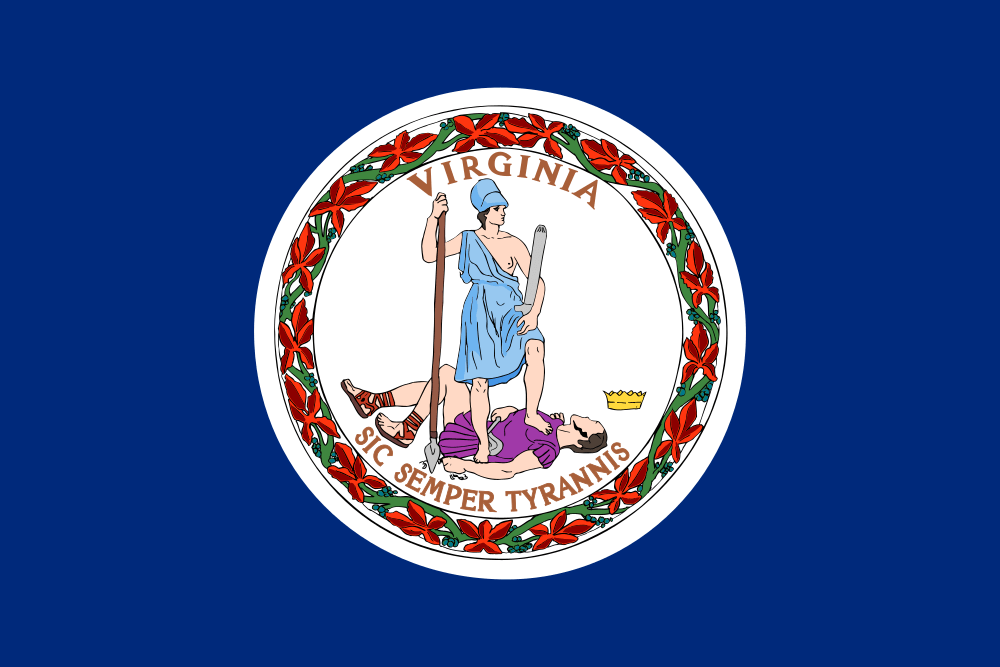Virginia state flag Colors Code hex, png svg
Virginia State Flag History
The flag of the Commonwealth of Virginia was adopted in 1861 during the American Civil War, following Virginia’s secession from the Union. The design, however, dates back to the American Revolution. The current flag’s design was standardized in 1930, though it has undergone slight modifications over the years.
Design and Colors
The flag consists of a deep blue field with the seal of Virginia in the center. The seal, designed by George Wythe in 1776, features several elements with symbolic meanings:
- Seal Design:
- Virtus: The central figure on the seal is Virtus, the Roman goddess of virtue. She is depicted as an Amazon, wearing a blue tunic and a helmet, holding a spear and a sheathed sword.
- Tyranny: Below Virtus lies a fallen king, symbolizing tyranny defeated. The king’s crown is cast aside, symbolizing the rejection of monarchical rule.
- Motto: Encircling the seal is the Latin motto “Sic Semper Tyrannis,” meaning “Thus Always to Tyrants.”
- Colors:
- Blue Field: The deep blue background represents vigilance, truth, and loyalty.
- Seal Colors:
- Virtus’ Tunic: The blue tunic of Virtus reflects the state’s commitment to vigilance and justice.
- Red of the King’s Garments: The red garments of the defeated king signify valor and courage.
- Green Earth: The green color of the earth symbolizes fertility and prosperity.
- White Elements: The white elements, including Virtus’ helmet and the scroll with the motto, stand for purity and peace.
Symbolism
The overall symbolism of the flag reflects Virginia’s dedication to the principles of liberty and justice. Virtus’ stance over the defeated tyrant underscores the state’s historic commitment to fighting against oppression and upholding democratic values. The colors and the imagery together convey a message of vigilance, courage, and the triumph of virtue over tyranny.
In summary, the Virginia state flag encapsulates the state’s rich history and its values through a combination of symbolic imagery and colors that reflect vigilance, justice, valor, fertility, and peace.
Guess the Flags Quiz
Sharing is caring 🤗

National Symbols 👇
- 🏁 National Flags
- 🦁 National Animals
- 🐦 National Birds
- 🌻 National Flowers
- 🌴 National Trees
- 🥭 National Fruits
- 🍹 National Drinks
- 👴 National Founders
- ☘️ National Emblems
- 🍲 National Dishes
- 🏛️ National Monuments
- ✍️ National Poets
- 🕌 National Mausoleums
- 🎺 National Instruments
- 🦸 National Heroes
- 📆 National Days

